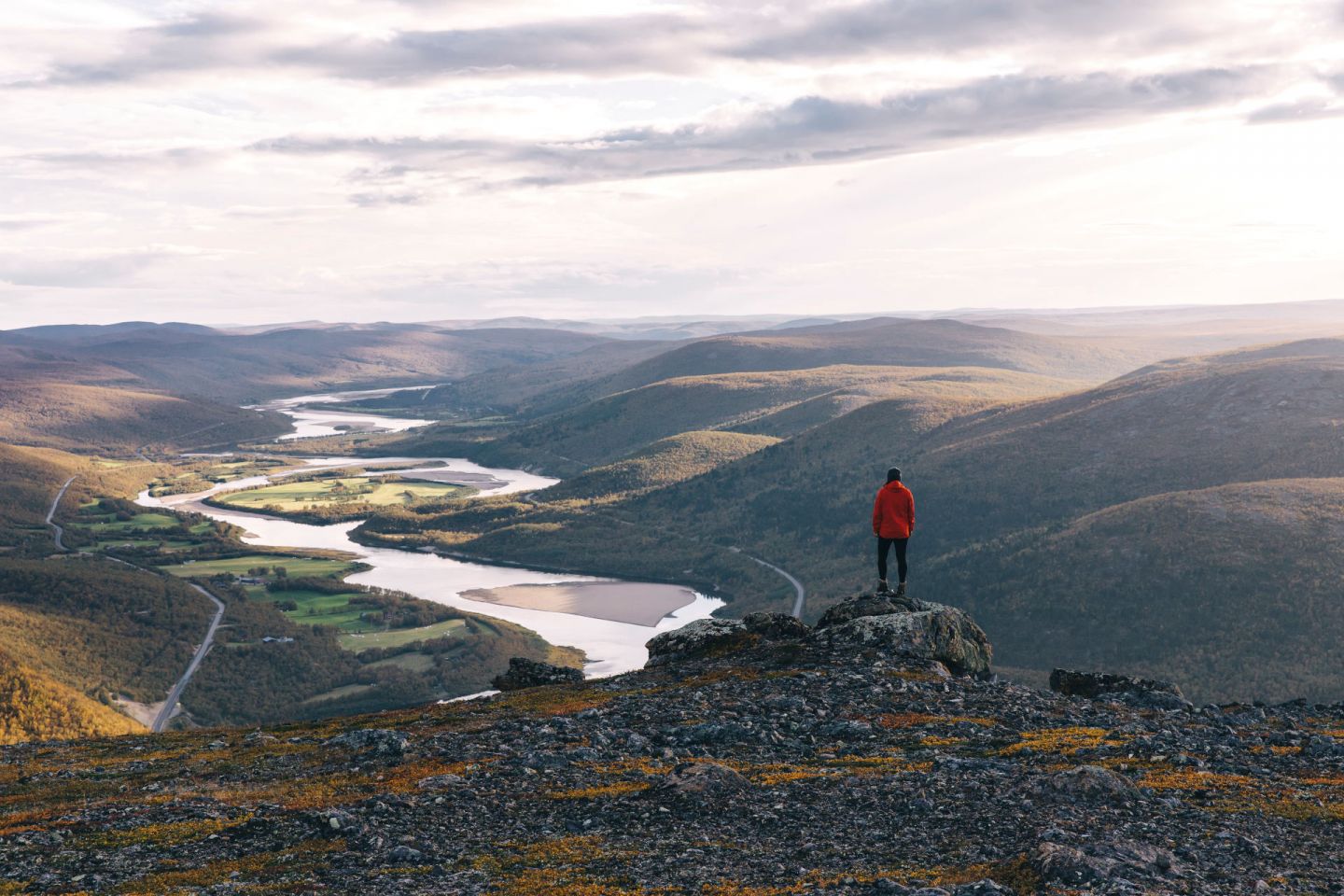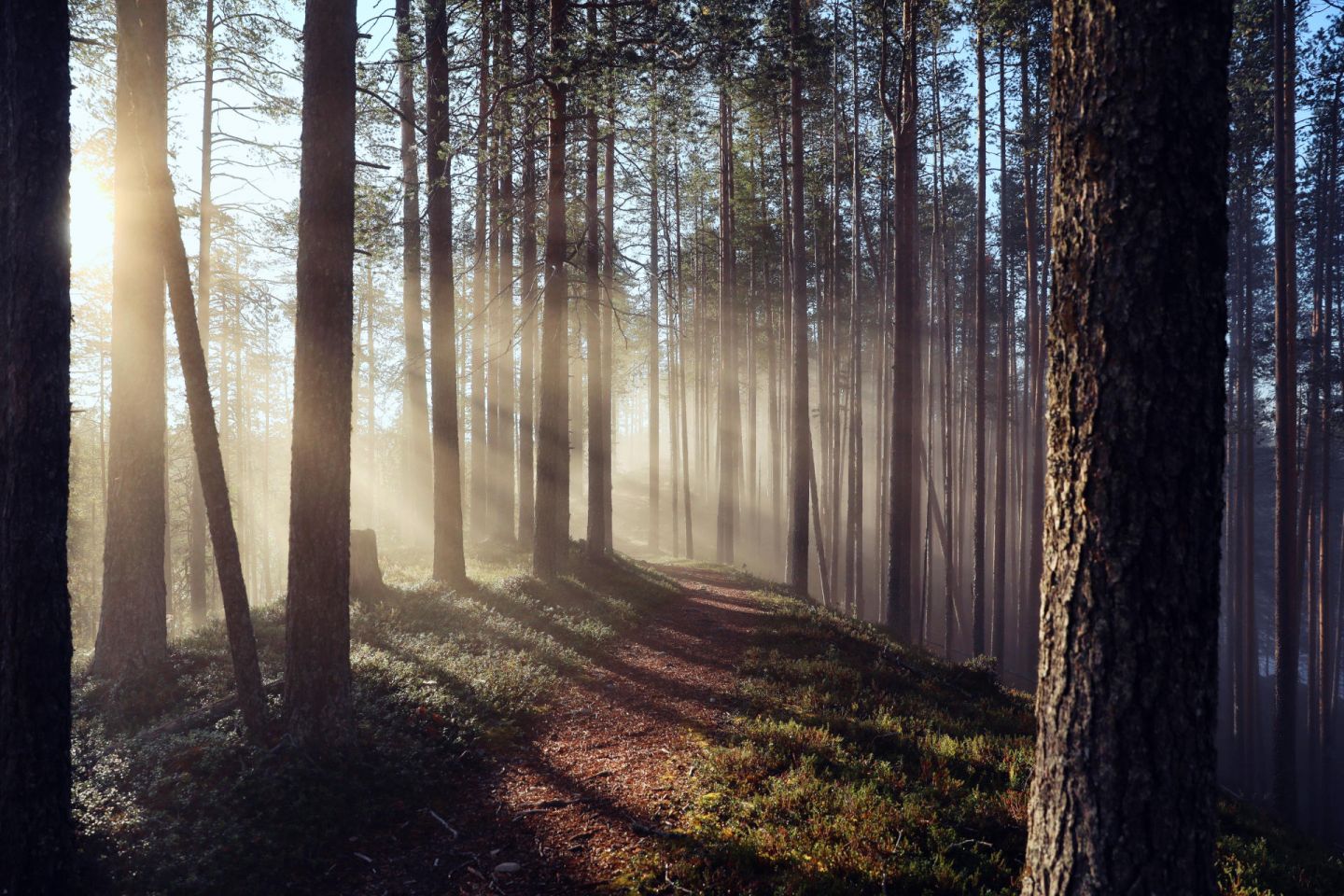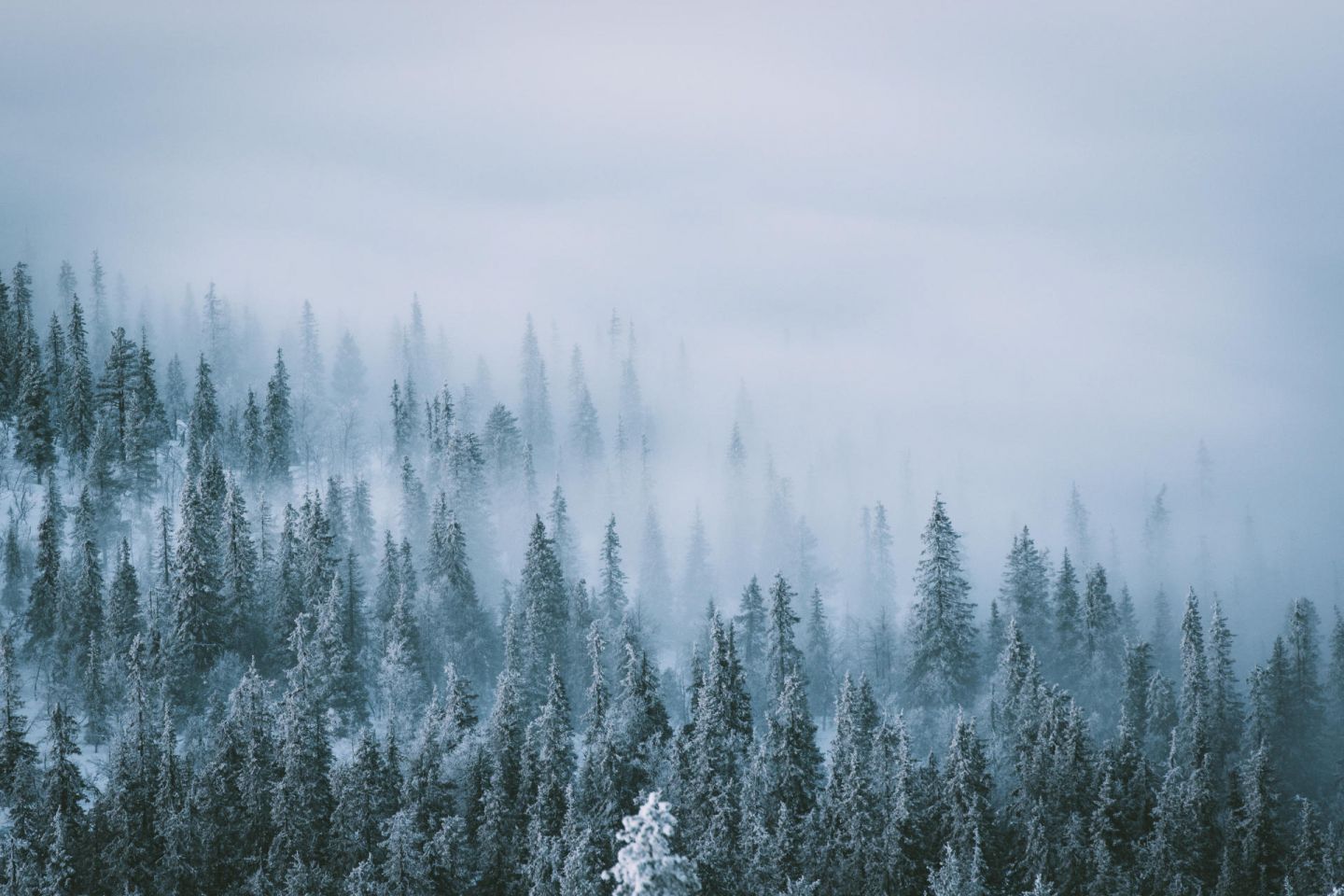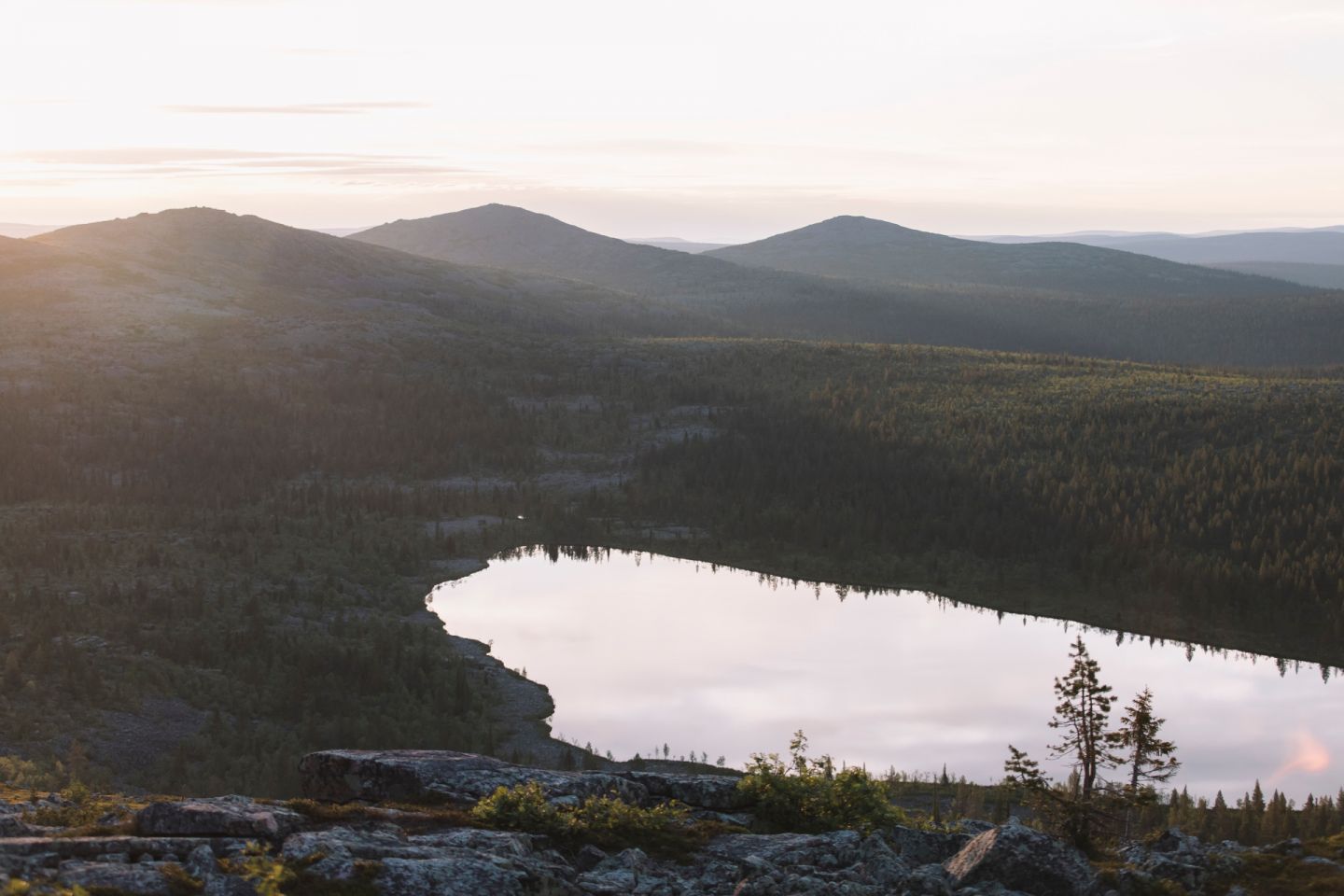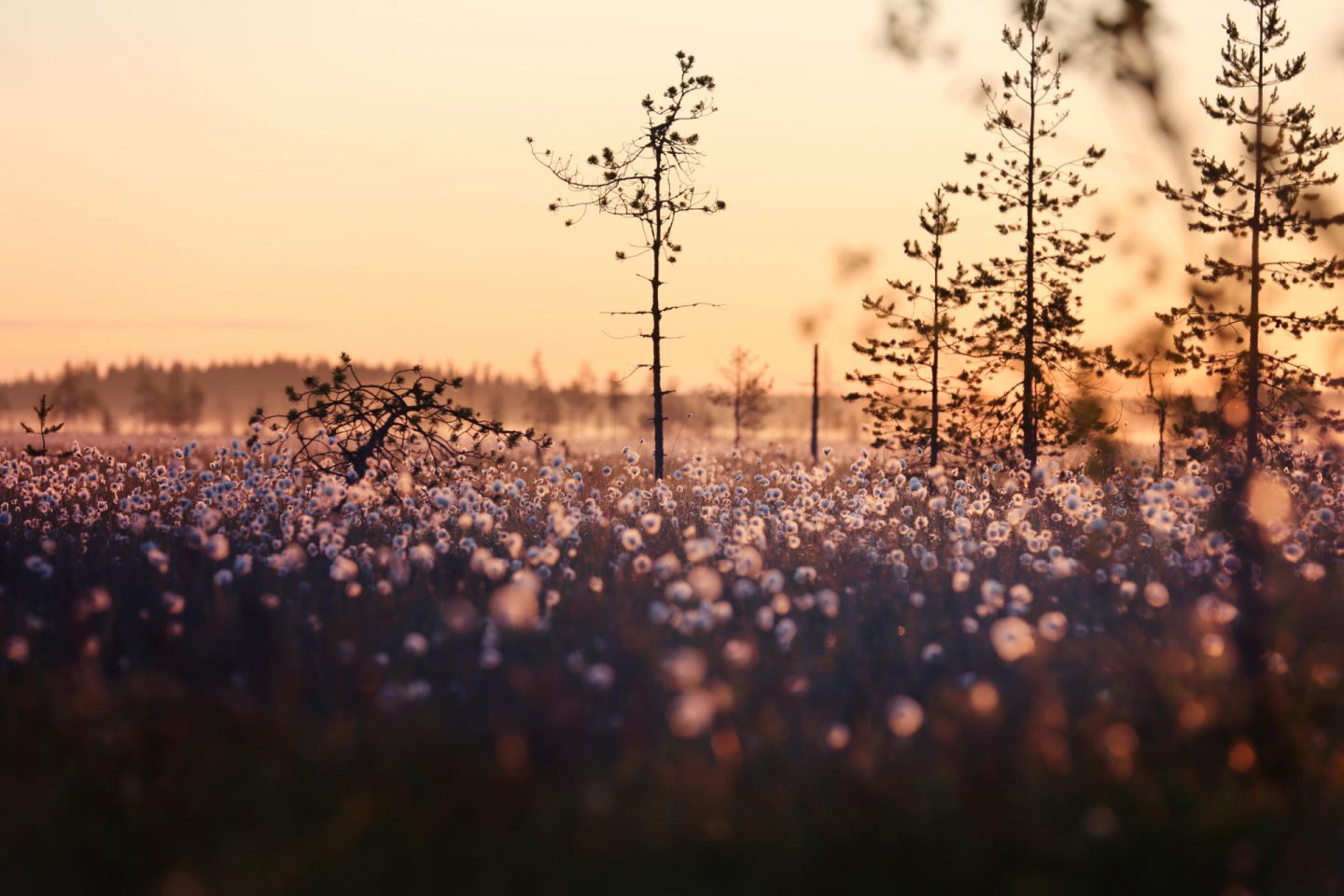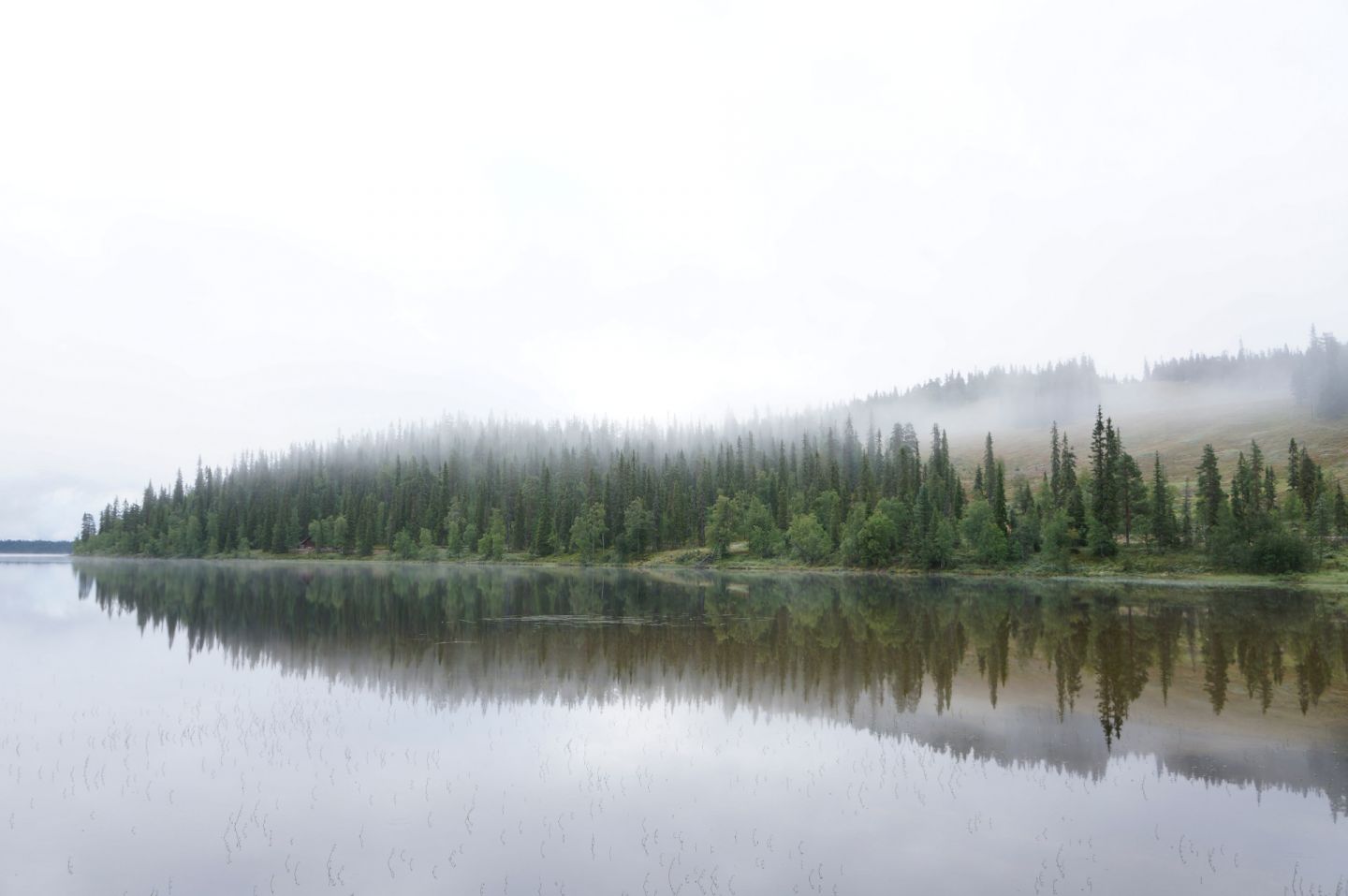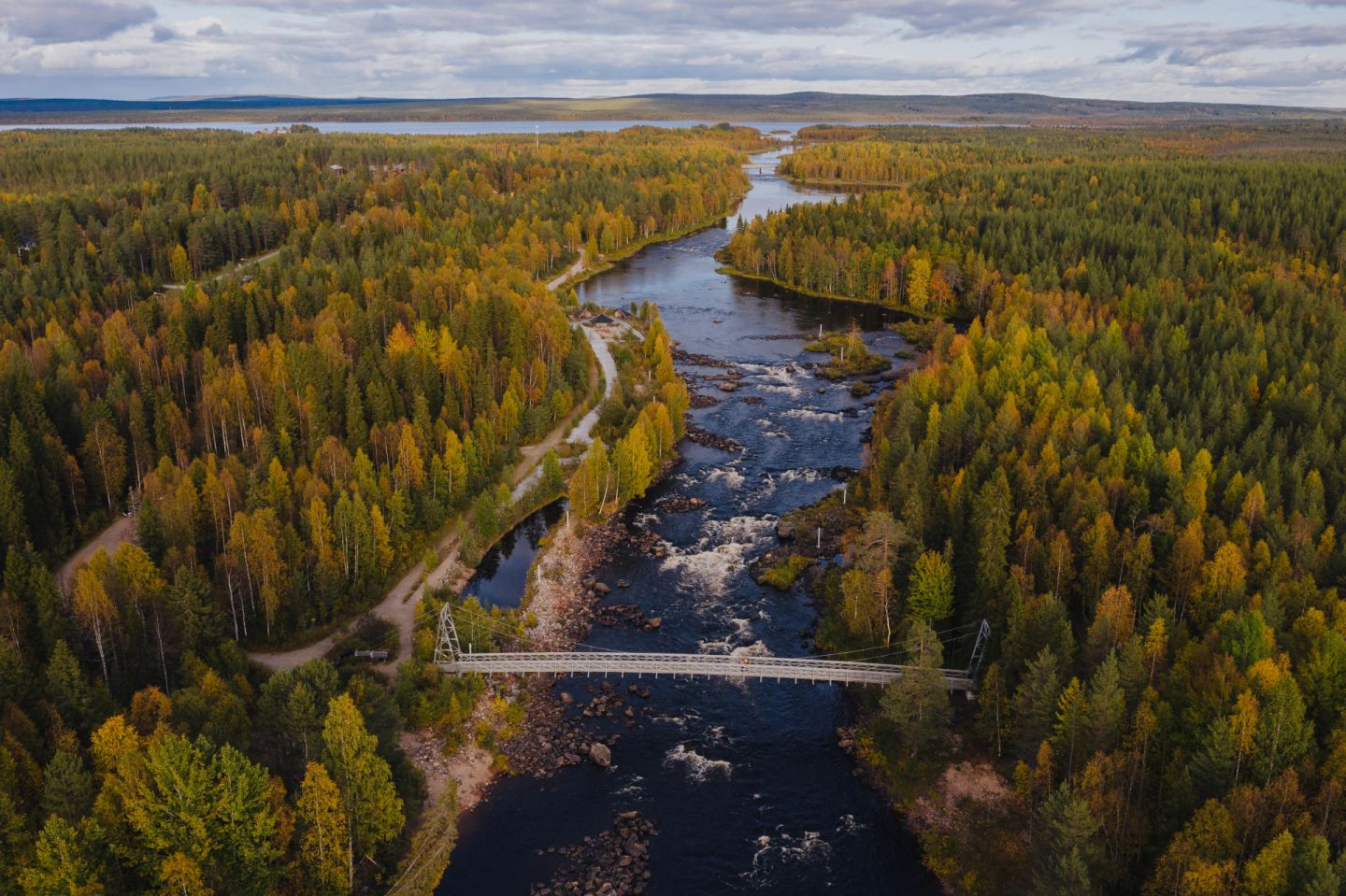Northern Finland is home to Europe’s only wilderness, the gateway to true Arctic adventures. Come explore Lapland’s forests, fells, bogs, rivers, lakes and more.
Welcome to Finnish Lapland, the last wilderness in Europe. Maybe you’ve heard that before, but you don’t quite understand what it means. What is wilderness anyway? Wilderness is wild and uncultivated land—the way the Earth looks without human intervention. In Finnish Lapland, the vast majority of space is wilderness, tracts of land and water where forests grow free, rivers rush and gurgle. Here, many wild animals are born, live and die without ever seeing a human being.
For the people of Lapland, wilderness has been part of the natural rhythm of life for hundreds, even thousands of years. We have a deep respect for nature in Lapland, for its power, its beauty and its importance to local culture and the world as a whole. And though it may look untouched, every corner of Lapland’s wilderness is known to us and carries a deep meaning. So whether it’s a quick hike through the forests just outside town or a days-long trek through protected areas, respect informs the way we act and treat the wilderness.
This is what wilderness means.
FORESTS
You’ll notice from the moment you arrive in Lapland that there’s no shortage of trees. Finland is covered by part of the great taiga forest that grows from the shores of the northern Atlantic Ocean across Scandinavia, through Russia and ends on the shores of the Pacific Ocean. This forest is the largest biome in the world, and in Lapland, it’s made up mostly of birch, spruce and pine trees. There are also a few Christmas pines, aspens and willows for flavor.
In winter, forests are mystical and still, as if time has stopped, the world frozen beneath sparkling ice crystals and dark green emeralds. Near towns and villages, there are often cross-country skiing paths that will take you into the wilderness. A popular way to enjoy the frozen forests is from the back of a reindeer-pulled sledge. In the summer, the forests come to life. Hikers and bikers explore the paths and trails, while orienteers venture among the underbrush, checking their GPS locations all the while.
Experience the Arctic wilderness, the many seasons of the north and learn what to expect with Virtual Lapland!
FELLS & GORGES
If you’re not from the North, you might not know what a fell is. It’s a special hill, carved out of mountains by Ice Age glaciers. Fells are usually only found in Scandinavia and the northern UK. Fells in Finland are usually gentle and barren, all their features worn down by age. Fells are a feature across Lapland, some stony and stark, others green and round. What about mountains, I hear you ask? The only mountains to be found in all of Finland are the few peaks in the northwestern arm of Lapland, part of the Scandinavian Mountain range.
Where you have mountains, hills and fells, you’ll usually have valleys, ravines and gorges. Lapland is home to some of the most stunning gorges, courtesy of winding rivers. In the southern fells—just below the Arctic Circle—there are gorges that host waterfalls in summer, and frozen ice-climbing walls in winter. In western Lapland, there are a bundle of fells around a national park. We call them the Seven Sisters, and they’re full of skiers and snowboarders every winter and spring. In the northeast, the fells are bald and barren, too far north for the lush green forests of the south.
Like the forests, the fells are covered under Everyone’s Right. This means they are there for your leisure and pleasure, but you also bear responsibility for their protection and preservation. Under the Midnight Sun, strap on some hiking boots and venture up. In winter, carry your snowboard along for some back-country slopes. Fells also offer some of the best overlooks and vistas, both of gorgeous gorges and unbroken wilderness from horizon to horizon.
BOGS & MARSHES
Sometimes you’ll hear Finns talk about the swamps of Lapland. But don’t worry, we don’t have alligators or crocodiles here. (We do have the mosquitoes though.)
Our bogs and marshes vary in depth, size and character, but you can usually walk on them. Make sure you have some rubber boots, though. In many places, especially protected nature areas, you can walk across the soggiest parts of the bogs on duckboards.
In winter, the bogs are frozen and covered with snow, and these are great places for cross-country skiing and snowshoeing. Summer, though, is when the bogs truly come to life. Slap some mosquito repellent on your hands and face and venture out into pure Lapland wilderness. In late summer, the bogs are also where berries often grow, a tasty reward for your exertion.
RIVERS & LAKES
Lapland is crisscrossed with rivers, and polka-dotted with ponds, lakes and reservoirs. The Teno (Tana) River comes down from the Arctic Ocean. The Muonio and Tornio Rivers form the natural border between Finland and Sweden, and every summer, they are so packed full of salmon, you can practically walk across the river. Other rivers run for hundreds of kilometers and carve gorgeous gorges through Finland’s national parks.
Lake Inari in northern Finland is the largest lake in Sápmi, the northern region traditionally inhabited by the indigenous Sámi people. (Sápmi covers northern Norway, Sweden, Finland and northwestern Russia.)
In winters, the rivers and lakes freeze, and you’ll find ski tracks, snowmobile paths and ice-fishermen out there. In summer, the waters are full of swimmers, boaters and of course, fishermen.
TAIGA VS. TUNDRA
We don’t wanna brag, but the taiga forest that stretches across Finland is part of the largest biome on Earth. We’re not sure what biome means, but it sounds pretty important.
Taiga forests are temperate, meaning between tundra and tropical. In Lapland, that means pine, spruce, birch, aspen and willow trees. A quick look at Google maps will show you just how green Lapland is … there’s barely any other color at all!
But if you travel far enough north in Finland, you begin to notice that the pine trees eventually vanish, replaced by gnarled and stunted birch trees. That’s because you’re no longer in the taiga forest … now you’re in the tundra. The cool temperatures and thinner atmosphere aren’t as conducive to towering trees. Travel ever northward, beyond the borders of Finnish Lapland, and the trees vanish altogether, replaced by scraggly bushes and polar bears.
SUMMER VS. WINTER
Idyllic summers. Arctic winters. That’s the best way to characterize Lapland on either side of the year.
In summer, you’re free to explore to your heart’s content. Hike the trails of massive national parks. Fatbike up stony fellsides, revealing epic vistas. Grab your oars and hit the placid lakes. Summer is great for self-guided trips, whether it’s an hour-long exploration of a cityside hill or a three day journey across authentic tundra wilderness.
In winter, safaris are the name of the game. We’re not talking elephants and lions, we’re talking snowmobile caravans through a frozen wonderland. The temperatures drop so low your eyelashes freeze and every breath reminds you that you are at the top of the world. A hike by snowshoe might take an hour, but the memories of trudging through snow-crowned trees will last forever. Reindeer and huskies are also happy to take you on a round-trip through a frosty forest, across the frozen marshes and back for a cup of warm juice.
With all this talk of summer and winter, we don’t want to give the impression that we’ve forgotten about autumn. Lapland’s autumns are short and fierce, as the forests and bogs and fells blush deep crimson, burn fiery yellow and shimmer like gold through the month of September and into October. Autumn also marks the return of the Northern Lights to Arctic skies. In other words: autumn is the perfect time to slow down and enjoy the most colorful weeks of the year.
Looking for more winter fun? Check out the best reasons to visit Lapland in the winter.
Or maybe summer warms your heart? Learn the best reasons to visit Lapland in the summer.




